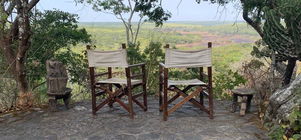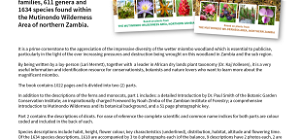F.A.Q. - Frequently Asked Questions
Can I camp in the campsite and eat in the Lodge?
Yes! But please give us at least 4 hours notice - and let us know of your dietary requirements and preferences - before you join us for:
- Breakfast: $12.00
- Lunch: $12.00
- Dinner (3 courses, Set Menu): $18.00
What Times are Meals Served?
We're flexible! Let us know the time you want to eat, and we'll do our best to fit you in, but our usual times are:
- Breakfast: between 07.00 and 10.00
- Lunch: between 13.00 and 16.00
- Dinner: between 19.00 and 21.00
If you're staying in a chalet, you will also get tea or coffee in your chalet in the morning - please let us know which you would prefer, and what time you would like it, the night before.
If you want a packed lunch, please let us know at breakfast; and if you need to be off early in the morning, let us know, and we'll try to have breakfast ready before you go.
Do you have a bar?
Yes! You'll find Harry's Bar on lodge rock. It is an honesty bar, so there is no barman - you take what you want, and note it down on the bar-sheet provided.
Is there Wifi available?
Yes! We have free WiFi available in the reception area, based on a V-Sat connection.
Can I get Mobile Signal at the Campsite?
We are quite a way outside of normal coverage, but there is limited coverage within the main lodge. Good coverage for Airtel and MTN can be picked up from several of the inselbergs, including Campers Rock.
Can you pick me up for my stay and drop me off when I leave?
We can collect and drop-off guests in nearby Kalonje, but we are not insured or licensed for pick-ups from further afield, so guests must arrange their own transport.
Can I book a self-catering Chalet?
Aside from the Campsite Room, all chalets are full board, and not equipped for self-catering visitors. Guests staying in chalets but wishing to cook for themselves can book at additional cost a campsite, which includes use of a braai, picnic bench and firewood for cooking.
Is Tap Water safe to Drink?
Tap water is pumped from the Musamfushi River. Most management and staff drink this water unboiled, but we are obliged to tell you that it has not, to date, been tested. Boiled water is available from the lodge kitchen, free of charge, and limited bottled water can be purchased from the bar.
Is the track to the main camp passable without a 4x4?
Yes - the road is re-worked annually at the end of the rainy season, but provided you stick to a reasonable speed, the road is easy to traverse in a saloon car. It is sandy, so in wet weather we recommend staying below 30km/h on most stretches.
Is the nearby Route 5 into the South Luangwa Park passable to a 4x4?
Sorry, but we really can't answer this one! The state of this road changes rapidly and dramatically, especially during the rainy season, so we encourage you to contact the specific lodge in the park that you wish to travel to, as they will be able to give you a more up-to-date answer.
Is there a map to the walking routes in the area?
Yes! In fact, you can download a .pdf copy by clicking HERE, or ask in reception, and we will give you a paper copy. More extensive (and artistic) maps can be found on the walls the lodge dining room, the campsite nsaka, and the Kankonde Nsaka - and if you're a keen birder, you can get an version annotated with top sites for spotting key species HERE or in reception.
Is it safe to walk without a guide?
Relative to most national parks, we have very few dangerous large mammals, and most of the time, guests are relatively safe and most are happy to explore by themselves. However, this is a wilderness area, and our wildlife can be unpredictable, so guests are advised that all activites, including hiking, are at their own risk.
Is it possible to arrange a guide?
Yes! If you feel unsafe walking alone, or simply want to learn more about the area as you go, a member of staff will be happy to accompany you. For one day, use of a guide is US$25.00; this fee is waived on the very rare occasions when lions enter the wilderness area.
Can we arrange longer, overnight hikes?
Yes. A popular guided hike takes visitors out of the wilderness area, into the Luangwa valley and close to the National Park, and alternatives routes can be arranged - but please contact us in advance if you wish to arrange this or any other longer hike, so that we can calculate costs and work out camp-sites with water access along your route. Please also note that we do not provide food for longer hikes.
Is it safe to swim in the rivers?
In most places - at some times of year, the currents can be dangerous, especially close to the waterfalls. For more information, see our swimming page.
Do I need to bring a torch?
If you're camping, we strongly recommend it! We provide solar lamps to chalet guests, but unfortunately we only have a limited number, so please return these to the reception in the morning, so that we can charge them up for use the next evening. Most can also be used to charge your phone via USB, but they can be fragile, so try not to drop them.
Can you dispose of my trash for me?
Unfortunately, we aren't in range for any litter collection - so we ask that you take all non-compostable waste back with you. If you don't have a bin-liner or bag with you for this purpose, let us know and we'll see if we have something you can use to carry your waste with you.
Can I pick flowers or take plants home with me?
Please don't! Many of our local plants are rare, or found only in a very small area, so please treat them with respect. Some are protected by law - so removing them can incur stiff legal penalties. We encourage guests to take pictures and enjoy our wildlife in its natural habitat.
Is the Mutinondo Wilderness Area open to researchers?
Of course! The inselbergs and the surrounding area have an incredible natural history - as you can see from our Things to See at Mutinondo page - and we have hosted notable researchers from a wide range of fields. In order to encourage much-needed study within the region, we offer reduced rates for researchers who need access to the wilderness area for prolonged periods of time (usually upwards of 14 days), with the requirement that the Mutinondo Wilderness Area is mentioned in any resulting publications, and is notified of the results of such research. Please contact us in advance and let us know of your research proposals and requirements, so that we can inform you of any specific rates and requirements.
What are the origins of the names of the landmarks around the wilderness area?
It's complicated! Some pre-date the founding of the wilderness area (read more about that here):
Mutinondo is the name of one of the two rivers flowing through the area (which flows past Kankonde camp), said to be after an early settler near the headwaters; in the Bemba language, mutinondo roughly translates to a wooden-handled hammer.
Musamfushi is the existing name of the other river - which runs by the main lodge, any further meaning is unknown;
Mayense (and Little Mayense) began the tradition of naming the inselbergs after people before our arrival: the original 'Mayense' was a man whose car broke down at the base of these rocks - and the remains of the engine may still be found in a gully close to the base.
Kabasano Dambo was the favourite gathering spot of the wives of a local chief, over a century ago; Kabasano is the collective name for the wives of a chief.
Mafoni road, the original road past the wilderness area, was named for a mines surveyor who spent time in the area; mafoni being a pidgin for the headphones which he was rarely without; Mafoni Dambo and Mafoni Hills honour the same unknown surveyor.
Biobo Dambo, Kabulu Dambo, Peter (Kabanshi)'s Dambo and Nyandela Dambo are named after individual local hunters who favoured these particular sites; many of these individuals have since passed away.
Other sides are named after wild plants or animals found there:
Kankonde is the local name for banana, as an inedible wild banana has been found growing at the foot of the inselberg;
Big Chipundu Dambo is named for a tree that grows there in particular abundance;
Paradise Pools is a good spot for seeing the colourful migratory paradise flycatcher;
Ndubaluba Waterfall takes the name ndubaluba for the onomatopoeic local name for the colourful Ross' Lourie/Turaco that can often be seen in the riparian thicket around the site.
Klipspringer Rock is named for the rock-dwelling antelope that can commonly be seen on this rock.
Choso Waterfall is given the local name choso after a type of waterfowl sometimes seen in the river there.
Leopard Rock is one of the sites where leopards can occasionally be seen; the owner Mike first saw a leopard here in the 1990's.
Hyrax Hill is named for the rabbit-sized, rock-dwelling mammals, also called dassies, who are particularly common amongst the crags and crevices of the site.
Kansansala Rock and Kaloko Rock take local name for Sable antelope, which are reasonably common in the area, especially around Kansansala; Kansansala being the general term, and Kaloko referring specifically to the black males.
Other names are after people and events that have been associated with them since the founding of the Wilderness Area:
Charlie's Rock and Vicky's Rock are named for the son and daughter of owner Mike, who were the first people to climb the rocks with Mike and Lari;
Quentin's Rock is named for renowned Zambian artist Quentin Allen, who not only climbed the rock with owners Mike and Lari, but took it upon himself to decorate it with some "rock art" of his own; Locally, Quentin's Rock and Vicky's rock are collectived known as Tuponya Mbo'o, the falling of the buffalo, after poachers drove an entire herd of buffalo (now extinct in the area) over these rocks to their deaths.
Kapinda's Rock is named after a local hunter who unfortunately drowned when trying to cross the Musamfushi close to the base of the rock;
Julian's Rock is named for a former manager of the site, and a friend of owners Mike and Lari, with whom they first climbed the inselberg.
Kite Rock is named for the kites which owners Mike and Lari flew with their nephews from the rock the first time they cllimbed it.
Mbeya Rock takes the local name for Grandmother, named for the mother of owner Lari, who climbed the rock accompanied by her husband and the parents of Quentin Allen, all of whom where in their late 70's at the time.
Diwell's Rock is named in honour of long-time, now retired employee of the wilderness area, Diwell Bwale.
Sally's Rock is named in memory of botanist Sally Bidgood, who along with her partner Kaj Vollesen, contributed greatly to our understanding of the plant life of the area.
Other inselbergs have been named for their unique features, including:
The Caterpillar is named for its elongate, rolling form - resembling (with some artistic license) a massive, granite caterpillars;
Confluence Rock is situated at the confluence between the Musamfushi and Mutinondo Rivers.


Share This Page